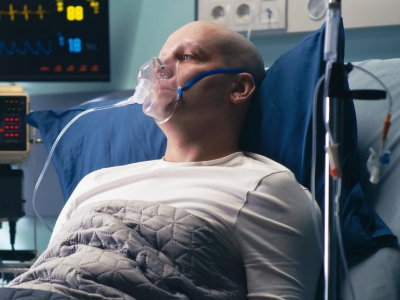Aug 13, 2009 (CIDRAP News) – On the second and final day of an Institute of Medicine (IOM) task force meeting on how to protect healthcare workers from the novel H1N1 virus, experts focused on issues surrounding the effectiveness and practical use of masks and respirators in work settings.
The IOM task force's goal is to make recommendations about how to protect healthcare workers during the H1N1 pandemic.
Over the past several years, pandemic planners have acknowledged, based on events that occurred in Canada during the SARS (severe acute respiratory syndrome) outbreak, that healthcare workers may be less likely to report for duty if employers don't adequately protect them. And after novel flu illnesses and one death among California nurses, that state's nurses association asserted that hospitals need to do more to protect them.
The US Centers for Disease Control and Prevention (CDC) currently recommends that healthcare workers who enter the room of a patient in isolation for suspected or confirmed novel H1N1 flu should wear an N95 respirator or equivalent protection.
Issues surrounding surgical masks
Lisa Brosseau, ScD, an industrial hygiene expert from the University of Minnesota School of Public Health, told the task force that, for surgical masks, providing workers with some guidance about how to wear them is likely to improve efficacy a bit, but she said fit doesn't matter if the mask has poor filtration ability.
She said the US Food and Drug Administration (FDA) doesn't approve masks and clears them only for marketing. Producers must show only that a new mask is as good as one that is already on the market to win clearance, she said.
Healthcare institutions are not required to purchase FDA-cleared masks, and many don't because they are more expensive, Brosseau said.
Roland Berry Ann, deputy director of the National Institute for Occupational Safety and Health's (NIOSH's) National Personal Protective Technology Laboratory in Pittsburgh, added that surgical masks vary widely in their ability to block aerosols, ranging from about 12% to 98%. He said health officials have little guidance on which masks are more protective.
"You don't know which one is the 11 or 12 [percent] and which one is the ninetysomething," he said, adding that unregulated dust masks have been shown to have level and variety of protection as FDA-cleared surgical masks.
Research on respirators
Lew Radonovich, MD, director of the National Center for Occupational Health and Infection Control in the Office of Public Health and Environmental Hazards at the Veterans Health Administration, said the VA has a large stake in the debate over what constitutes good protection in healthcare workers, because it is the largest integrated healthcare network in the nation. The VA health system has 180,000 workers who may be exposed to the virus and uses about 1.6 million respirators each year.
He said though yesterday's IOM presentations seemed weighted toward respirators, "I don't think it's necessarily that clear." A key issue is whether or not healthcare workers will wear the protective equipment their facilities provide for them. A tolerability assessment of 27 workers found that the frequency of complaints for N95 respirators and surgical masks were about equal, but criticisms were less intense for masks.
Researchers at the VA are in the process of developing a new respirator for healthcare workers. Called Project Breathe, the group is just completing the first phase of its work and has developed a list of 28 requirements for the new respirator model.
Werner Bischoff, MD, an infectious disease expert at Wake Forest University in Winston-Salem, N.C., said his research group has used rhinovirus to test the efficacy of face masks on human subjects and will soon launch similar studies using the live attenuated influenza virus contained in the FluMist vaccine.
When science meets reality
Meanwhile, Bonnie Henry, MD, an epidemiologist with the British Columbia Centre for Disease Control, was on the public health frontlines in Canada during the SARS outbreak, urged her colleagues to set realistic expectations for protecting healthcare workers.
She emphasized that as community members some healthcare workers will inevitably get sick with the novel flu virus. She said a zero-tolerance goal for illnesses is not feasible. She added that Canada is working toward making its respiratory guidance for healthcare workers more intuitive, which could help improve compliance.
Healthcare officials can expect that respiratory guidance will evolve along with the novel flu pandemic, Leonard Mermel, DO, medical director of the department of epidemiology and infection control at Rhode Island Hospital in Providence, told the group.
He said his institution took a "draconian" approach early in the outbreak by having all workers who have contact with sick patients wear N95 respirators. "They were telling me they can't function wearing them for their shifts," he said, adding that the hospital geared down to a more general droplet precaution policy for low-risk interactions with patients.
The H1N1 pandemic has raised some compelling questions about respiratory protection in hospitals, Mermel said. For example, some hospital officials wonder if healthcare workers should be screened each day before they start their shifts. He said a source from the CDC told him that 28% of healthcare workers who have been sick with the novel flu virus say they were exposed to a sick coworker.
"We have to be very mindful of the risk from healthcare worker to healthcare worker," he said.
Mermel also wondered if more could be done to identify people who are "super-spreaders"—for example, those who have severe infections, are immunocompromised, or have few cross-reactive antibodies. He also said it would be useful if federal officials developed a comprehensive list of mask and respirators that contained efficacy data.
See also:
Aug 12 CIDRAP News story "IOM hears diverse findings on PPE for flu"
IOM page with resources for PPE workshop
http://nationalacademies.org/hmd/activities/workforce/respproth1n1/2009-aug-11.aspx
IOM page with link to meeting agenda
http://nationalacademies.org/hmd/Activities/Workforce/RespProtH1N1/2009-AUG-11/Agenda-Workshop-on-PPE-for-Healthcare-Workers-in-the-Workplace-Against-Novel-H1N1-Influenza-A.aspx




















